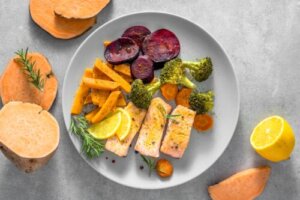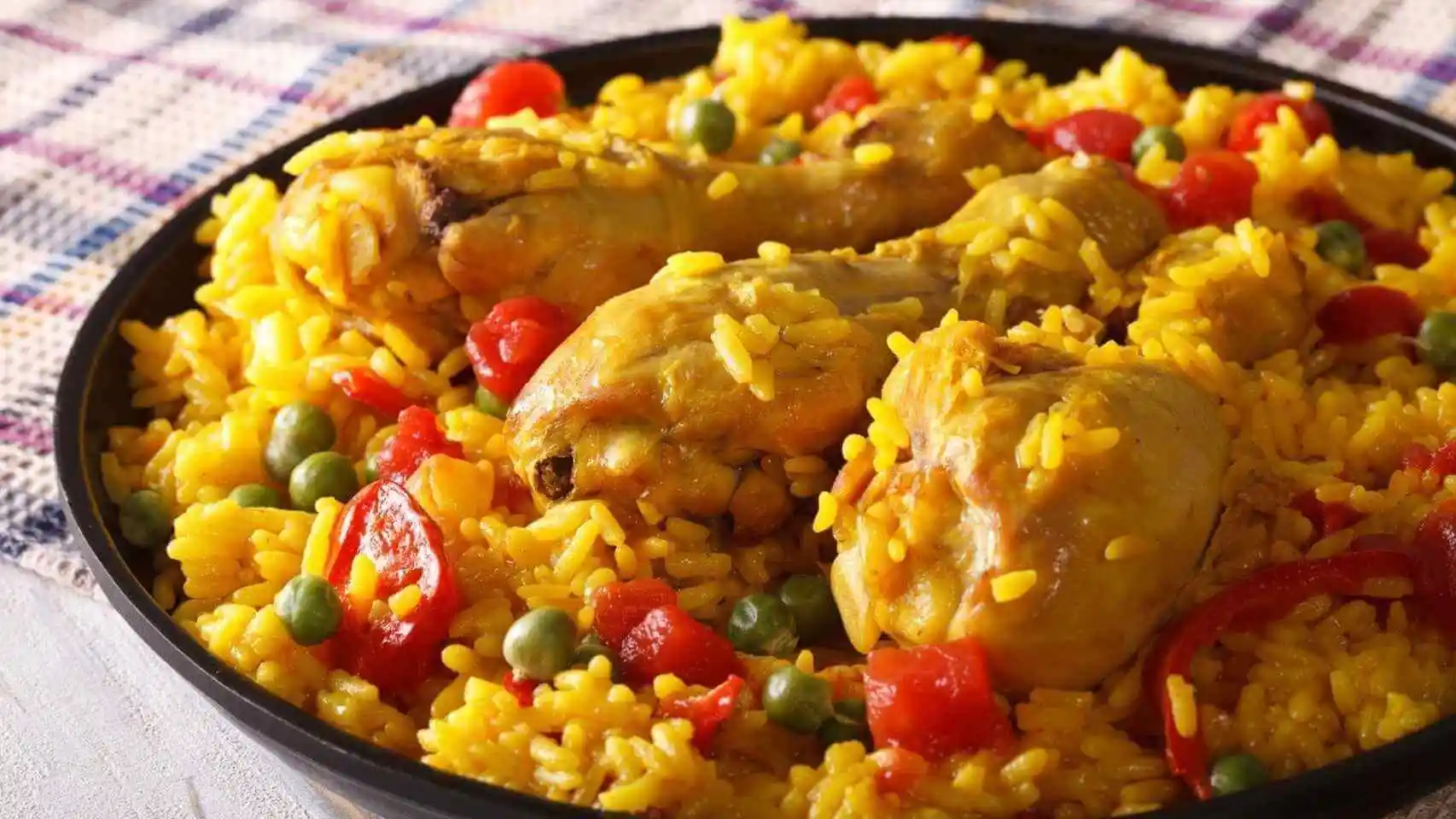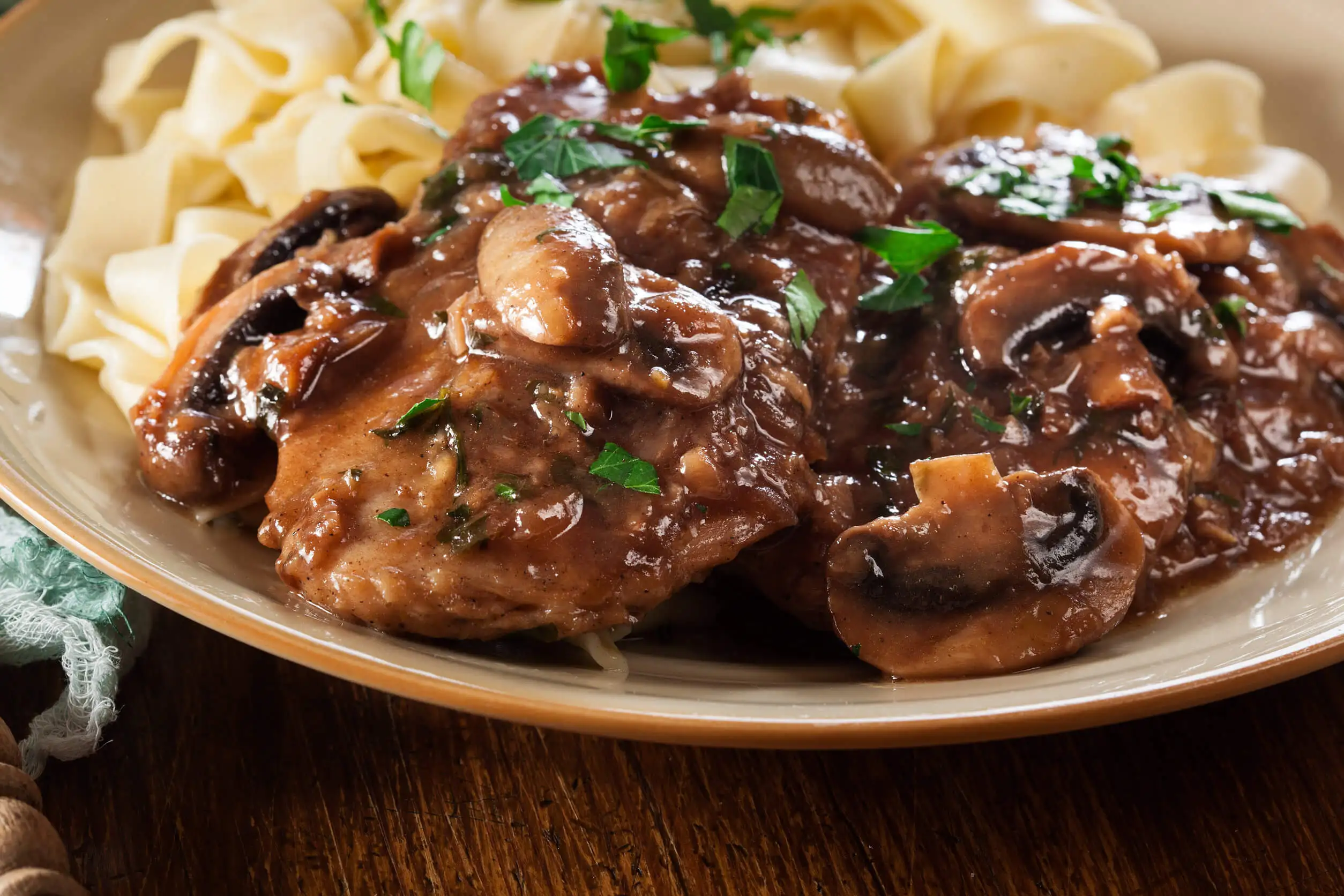3 High-Protein Recipes for Athletes


Written and verified by the nutritionist Saúl Sánchez Arias
We have three great high-protein recipes for athletes for you today. The high protein in them satisfies the requirements of one of the most important nutrients for athletes, which is necessary for muscle recovery after an intense exercise session. Otherwise, the risk of injury may increase in the medium term.
However, it isn’t always easy to meet protein needs throughout the day. That’s why we’ve prepared these recipes for you, which will increase the presence of this vital nutrient in your diet.
In this way, you’ll help your body to be in an optimal state to perform at its best. Keep in mind that you can always resort to supplements if necessary.
High-protein recipes for athletes
1. Quinoa and chicken salad
Quinoa, in addition to protein, is able to provide a significant amount of fiber. This substance has been shown to support bowel function. This reduces the risk of constipation, which could be uncomfortable for the athlete. At the same time, it ensures that the microbiota has an adequate density. This is key in terms of the efficiency of the digestive processes.

Ingredients
The products you’ll need to prepare this delicious dish are the following:
- 1 cup quinoa
- 3/4 cup plain yogurt
- 2 tablespoons of extra virgin olive oil
- 1 avocado
- Juice of one lime
- 1 chipotle chili bell pepper
- 2 cups of sliced and cooked chicken
- 1 jar of black beans, drained
- 2 cups of frozen corn kernels
- 2 cups of cherry tomatoes
- Two thinly sliced scallions
- 4 cups baby spinach
- 4 tablespoons pumpkin seeds
Step-by-step instructions
- Bring the quinoa, water, and a little salt to a boil in a saucepan.
- Cook over a medium heat until the cereal absorbs the liquid and is soft. This may take about 12 minutes.
- Let the quinoa stand for 5 more minutes and stir with a fork.
- Then mix the yogurt, oil, avocado, lime juice, lime juice, bell pepper, and a little salt until smooth.
- Divide the dressing into 4 jars and place the cooked chicken with the beans, quinoa, corn, tomatoes, spring onions, spinach, and pumpkin seeds in a bowl.
- When it is time to serve, add the dressing and that’s it.
2. Veal stew
Veal is a product that provides proteins of high biological value. These are characterized by containing all the essential amino acids. Among them, leucine stands out, as it has the capacity to activate the anabolic pathways of metabolism, favoring processes such as muscle hypertrophy. So says research published in the journal Nature.

Read more: Easy Steak Neapolitan Recipe
3. Baked salmon with sweet potato
Salmon is a source of omega-3 fatty acids. These nutrients are also important for muscles, according to a study published in the journal Mar Drugs. They help reduce the catabolism of lean mass and improve recovery after high-intensity effort.
Ingredients
For this recipe you’ll need:
- 4 salmon loins
- 300 grams (10.5 oz) of sweet potato
- 30 milliliters of olive oil
Step-by-step instructions
- Wrap the sweet potatoes with aluminum foil and bake them in the oven for 25 minutes at 180 degrees Celsius (350 F).
- At the same time, prepare in a bowl a mixture of oil with 5 grams of black pepper and 5 grams of Provencal herbs.
- Cut the cooked sweet potato into slices.
- Soak the sweet potato in the herbs.
- Place the salmon loins on the sweet potato bed. Cook everything for 15 minutes more in the oven and that’s it.
Read more: Smoked Salmon Blinis with Tartar Sauce Recipe
Prepare high-protein recipes for athletes
As you have seen, it’s very easy to prepare high-protein recipes for athletes. They provide a very high amount of essential nutrients, so they’re also recommended to help improve health. After all, they’re made with natural, fresh ingredients, products that help to ensure the proper functioning of the body.
Finally, remember that protein supplements are available for athletes, with the aim of increasing the presence of these nutrients in the diet. However, it isn’t always easy to choose a product of this type, so it’s first recommended to consult a nutritionist.
All cited sources were thoroughly reviewed by our team to ensure their quality, reliability, currency, and validity. The bibliography of this article was considered reliable and of academic or scientific accuracy.
- Gill SK, Rossi M, Bajka B, Whelan K. Dietary fibre in gastrointestinal health and disease. Nat Rev Gastroenterol Hepatol. 2021 Feb;18(2):101-116. doi: 10.1038/s41575-020-00375-4. Epub 2020 Nov 18. PMID: 33208922.
- Chen J, Ou Y, Luo R, Wang J, Wang D, Guan J, Li Y, Xia P, Chen PR, Liu Y. SAR1B senses leucine levels to regulate mTORC1 signalling. Nature. 2021 Aug;596(7871):281-284. doi: 10.1038/s41586-021-03768-w. Epub 2021 Jul 21. PMID: 34290409.
- Jeromson S, Gallagher IJ, Galloway SD, Hamilton DL. Omega-3 Fatty Acids and Skeletal Muscle Health. Mar Drugs. 2015 Nov 19;13(11):6977-7004. doi: 10.3390/md13116977. PMID: 26610527; PMCID: PMC4663562.
This text is provided for informational purposes only and does not replace consultation with a professional. If in doubt, consult your specialist.








